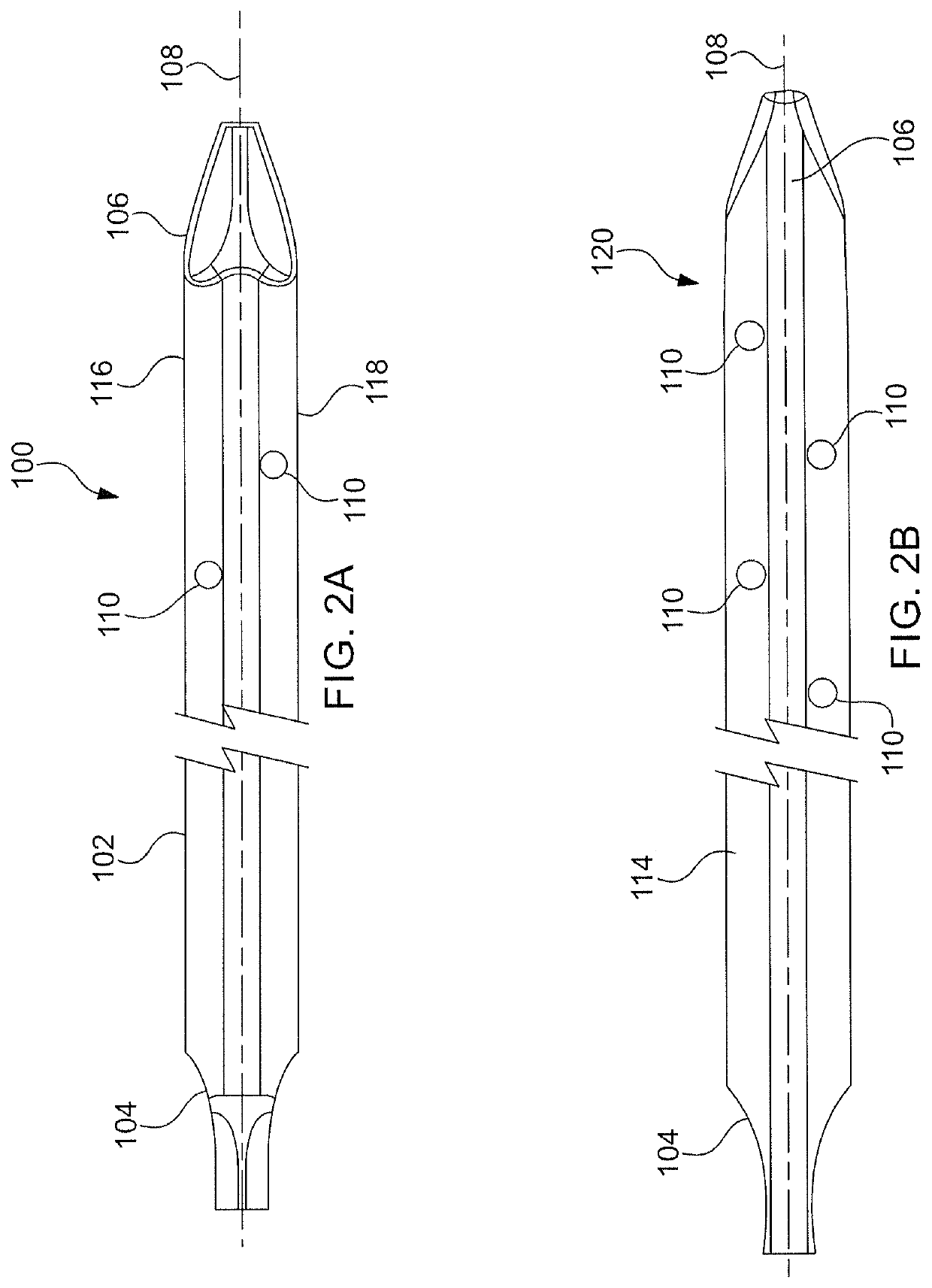Catheter with Tapered Self-Introducing Low-Recirculation Distal Tip
a low-recirculation, self-introducing technology, applied in the field of catheters, can solve the problems of limited effectiveness and efficiency of conventional catheter tips and multiple-lumen designs for reducing undesired recirculation, and achieve the effect of minimizing undesired recirculation and improving fluid flow
- Summary
- Abstract
- Description
- Claims
- Application Information
AI Technical Summary
Benefits of technology
Problems solved by technology
Method used
Image
Examples
example 1
tion Analysis
[0158]Percent lumen-to-lumen recirculation was determined for an exemplary embodiment of the present disclosure shown in FIGS. 1-12, referred to as “13.5F Trio-CT” and for a traditional catheter referred to as “15.5F T-3.” Two catheter lengths were tested for each of the 13.5F Trio-CT and the 15.5F T-3 catheters. A total of 30 catheters were tested as follows:
10×13.5F Trio-CT 15 cm catheter,
10×13.5F Trio-CT 30 cm catheter,
5×15.5F T-3 15 cm catheter, and
5×15.5F T-3 32 cm catheter.
Both normal and reverse flow re-circulation values were determined under a simulated use condition using saline. A two-head rotary pump was used with a flow rate of 2.5 L / min. For each of the 10 (traditional) 15.5F T-3 catheters, a single replicate experiment was conducted for each of the normal and reverse flow conditions. For each of the 20 13.5F Trio-CT catheters of the present disclosure, three replicate experiments were conducted for each of the the normal and reverse flow conditions. For e...
PUM
 Login to View More
Login to View More Abstract
Description
Claims
Application Information
 Login to View More
Login to View More - R&D
- Intellectual Property
- Life Sciences
- Materials
- Tech Scout
- Unparalleled Data Quality
- Higher Quality Content
- 60% Fewer Hallucinations
Browse by: Latest US Patents, China's latest patents, Technical Efficacy Thesaurus, Application Domain, Technology Topic, Popular Technical Reports.
© 2025 PatSnap. All rights reserved.Legal|Privacy policy|Modern Slavery Act Transparency Statement|Sitemap|About US| Contact US: help@patsnap.com



